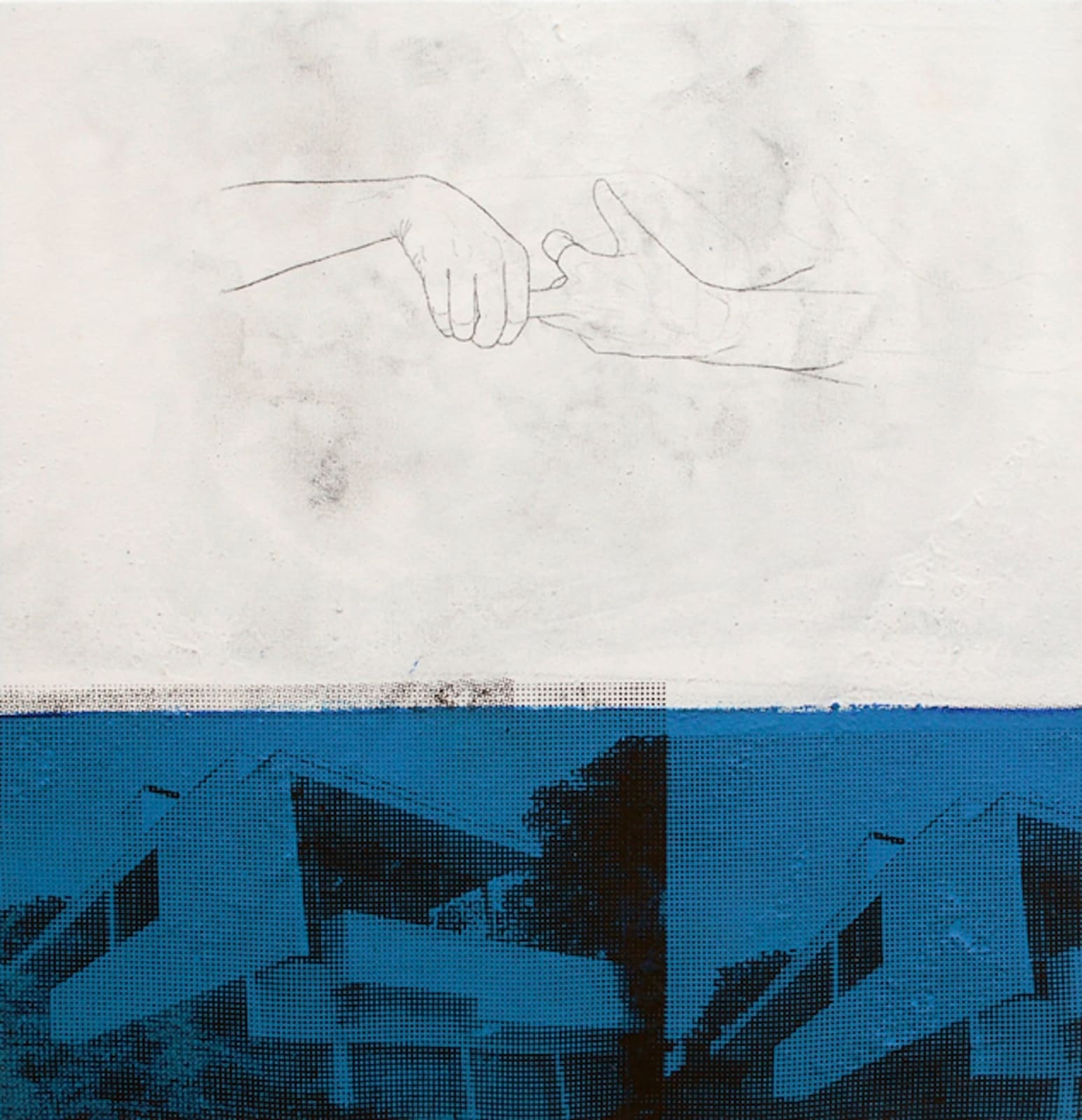
Julião Sarmento
Silver Lake Blue Hands, 2010/2011
Polyvinyl acetate, pigments, acrylic, acrylic gesso, ink, graphite and silkscreen print on unprimed cotton canvas
65 x 63.5 x 4 cm
Julião Sarmento has developed a visual discourse that looks into memory and transgression, seduction, and desire. The richness and complexity of his work lies in a system of free signifiers...
Julião Sarmento has developed a visual discourse that looks into memory and transgression, seduction, and desire. The richness and complexity of his work lies in a system of free signifiers travelling through the works and across his own limits. The use of regular patterns such as the expression of the hands, body language, and architectural floor plans achieves a free-play of associations that avoid settling into one meaning.
Silver Lake Blue Hands (2010/2011) is from his Silver Lake series of canvases. The white surfaces of the paintings and the partially erased forms (significant markers of Sarmento’s painting practice) coexist with silkscreened images in three primary colours: red, yellow and blue. In Silver Lake Blue Hands Sarmento has silkscreened photographic image of Rudolph Schindler's McAlmon House from Silver Lake in Los Angeles. The graphite drawing of hands on the white impasto references earlier paintings, such as Brain (2004). The thin lines trail off at the elbows, and the owner of the hands remains unstated and unidentified. There are no personal markers, no ring, no watch, no bracelet, not even a skin mole. There is something tender and timid about the posture of the hands, delicate against the bold Bauhaus architecture below.
Silver Lake Blue Hands (2010/2011) is from his Silver Lake series of canvases. The white surfaces of the paintings and the partially erased forms (significant markers of Sarmento’s painting practice) coexist with silkscreened images in three primary colours: red, yellow and blue. In Silver Lake Blue Hands Sarmento has silkscreened photographic image of Rudolph Schindler's McAlmon House from Silver Lake in Los Angeles. The graphite drawing of hands on the white impasto references earlier paintings, such as Brain (2004). The thin lines trail off at the elbows, and the owner of the hands remains unstated and unidentified. There are no personal markers, no ring, no watch, no bracelet, not even a skin mole. There is something tender and timid about the posture of the hands, delicate against the bold Bauhaus architecture below.